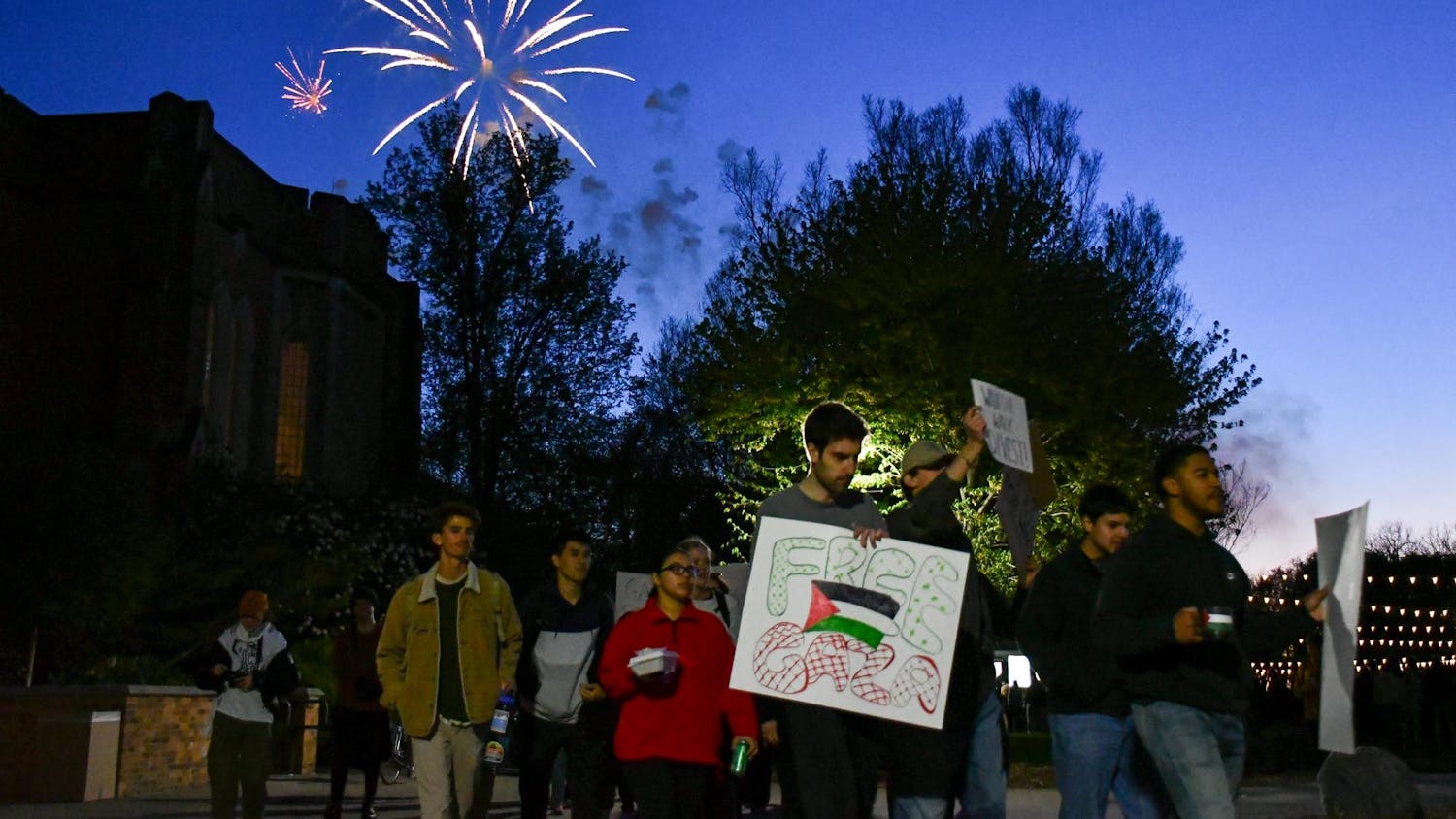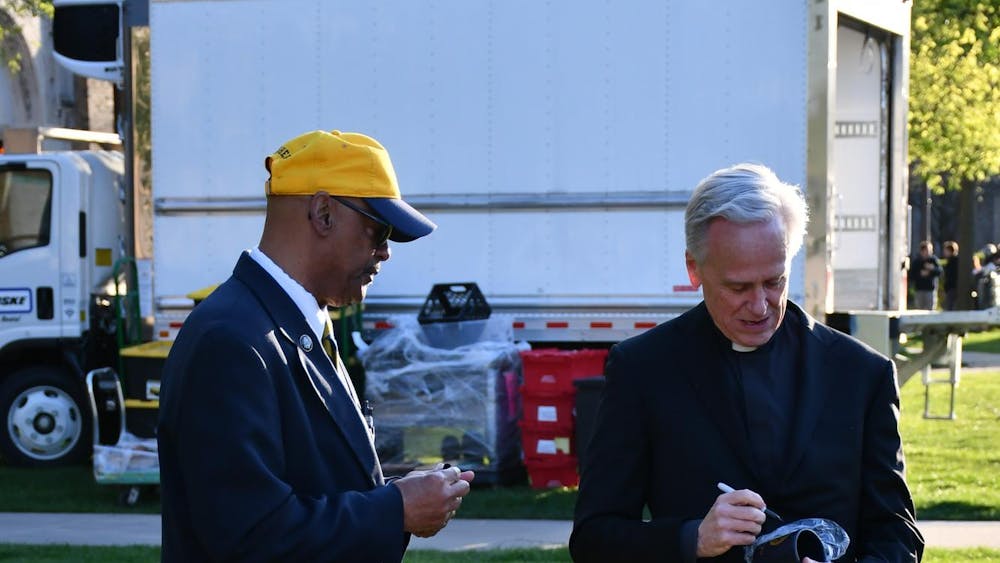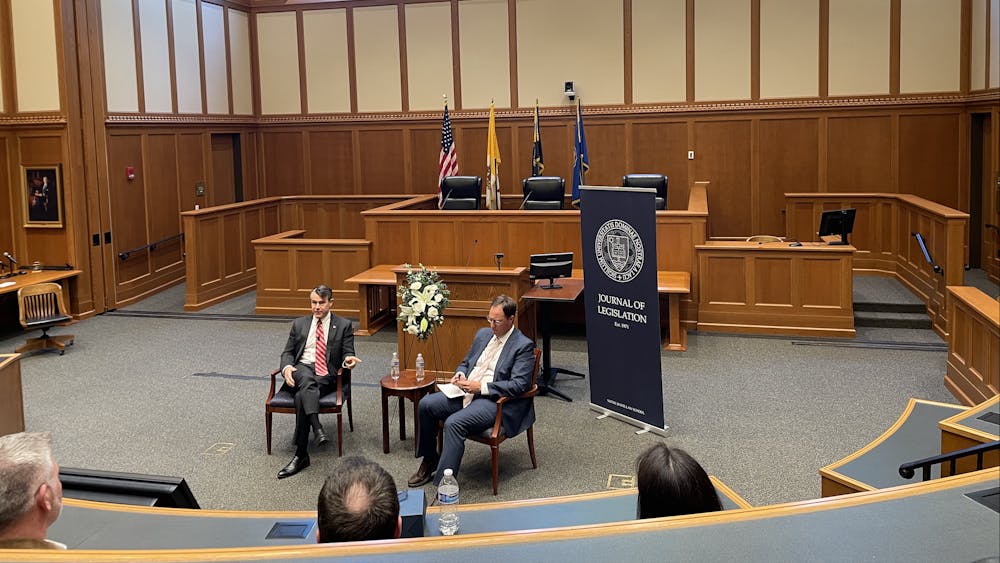The Center for Civil and Human Rights sponsored the panel discussion “The Right to Vote: Shaping an American Electorate” on Monday afternoon. Moderated by David Campbell, chair of the department of political science, the discussion centered on the accessibility of the ballot in current American culture, as well as the shaping of the electorate in the past.
The panelists included Dianne Pinderhughes, chair of the department of Africana studies and professor of political science, Jennifer Mason McAward, associate professor of law and acting director of the Center for Civil and Human Rights, and Luis Fraga, professor of political science and Arthur Foundation Endowed Professor of Transformative Latino Leadership.
African Americans did legally receive enfranchisement after the passing of the 15th Amendment to the Constitution, Pinderhughes said, yet they remained disenfranchised because numerous devices, such as literacy tests, prevented many eligible African Americans from actually voting.
“Post-Civil War, states were trying to make sure blacks could not partake in the electoral [system]. … Southern states have very large populations, these people form the balance of electoral power in the South, and Southern leaders attempted to curtail that,” she said. “The right to vote could not be sustained because of the power of the states, who were specifically determined to stop African Americans from voting. Even today, we see this challenge to the right to vote.”
McAward said Congress attempted to change the situation with the 1965 Voting Rights Act.
“The 15th Amendment was basically ignored for over 50 years after it was passed because of literacy tests that were enacted in the South,” she said. “Congress starting in the late 1950s to try to deal with that legacy in the South.”
Understanding the act is imperative to understanding its legacy, McAward said. There are five sections of the Voting Rights Act, which outlawed discriminatory voting practices that many Southern states adopted, including literacy tests, as a prerequisite to vote. While the act's provisions provide nationwide protection of voting rights, it also contains special provisions that apply specifically to certain jurisdictions in the South.
“Under Section 2 of the law, any citizen can become a plaintiff, that is, the person that is challenging a law, has to prove the law that was passed was discriminatory,” she said. “However, under Section 5 [which only applies to certain jurisdictions], districts have to pre-clear their voting law changes with the Department of Justice. Changing that burden of proof is an important thing — it places the burden of proof on the government itself.”
According to McAward, this provision stopped about 40 to 50 discriminatory voting laws from being enacted per year. However, McAward said that in the landmark case Shelby County v. Holder, the Supreme Court declared that the “coverage formula” — which decided what jurisdictions had to abide by Section 5 of the law — was outdated and unconstitutional. In order to keep Section 5 in effect, the House of Representatives has to draft a law that would change the coverage formula.
“Now all these states are free of a pre-clearance requirement,” McAward said. “The Chair of the House Judiciary Committee refused to see bills that offered new coverage formals. They think Section 2 of the [Voting Rights Act] is enough.”
Fraga said the enactment of voter identification laws, and the failure to pass a law that would uphold Section 5 of the Voting Rights Act, is a bipartisan attempt to stop that influence of African-American and Latino voters.
According to Fraga, many states have strict voter identification states, where a voter must present proof of identification in order to vote. These laws are put in place, according to Fraga, because of the “myth of voter fraud.”
“While voter fraud occurs a voter who casts a vote while knowing they are ineligible to vote, this rarely occurs,” he said. “More often, inaccurate tallies, user errors and technological malfunctions occur, and these are not the same thing as voter fraud.”
These laws are in effect to simply control voter turnout, Fraga said. He noted 51 percent of Latino citizens are not registered to vote, and just over 50 percent of Asian-American citizens are not registered to vote.
“It is an explicit attempt to control which party wins and which party loses,” he said.
Fraga said it is important to call voter fraud a “myth” because that allows people to understand the discrimination that is occurring.
“If we don’t call the reality what it is, it inhibits our ability to do what is really necessary,” he said. “We must remain particularly vigilant to protect access to the ballot and the equality of access to the ballet. It’s who has access and who can influence our democracy; it’s how we can be an inclusive nation and our governing institutions.”
McAward said voter ID laws have “a disproportionate impact on those who Congress is supposed to be protecting.”
“It turns out that there is a substantial number of people who do not have voter IDs, and these people are overwhelmingly elderly and minority,” she said.
Pinderhughes said it would be extremely difficult for older citizens, who are born in rural areas, to obtain a copy of their birth certificate. Even if their copy is on file at a registry, many simply cannot afford to pay for the copy.
Fraga said the U.S. is “one of the few democratic countries that has an ‘opt in’ system.”
“In other countries, the government takes the responsibility to register you to vote. Here, that burden is on the citizen. I worry about the extent of the message it’s sending to the country that this kind of exclusion is OK because it is being constitutionally justified,” Fraga said. “But honestly, we have a more fundamental problem than [citizens not] casting informed votes. We have a problem of citizens being prevented from even casting that vote.”













